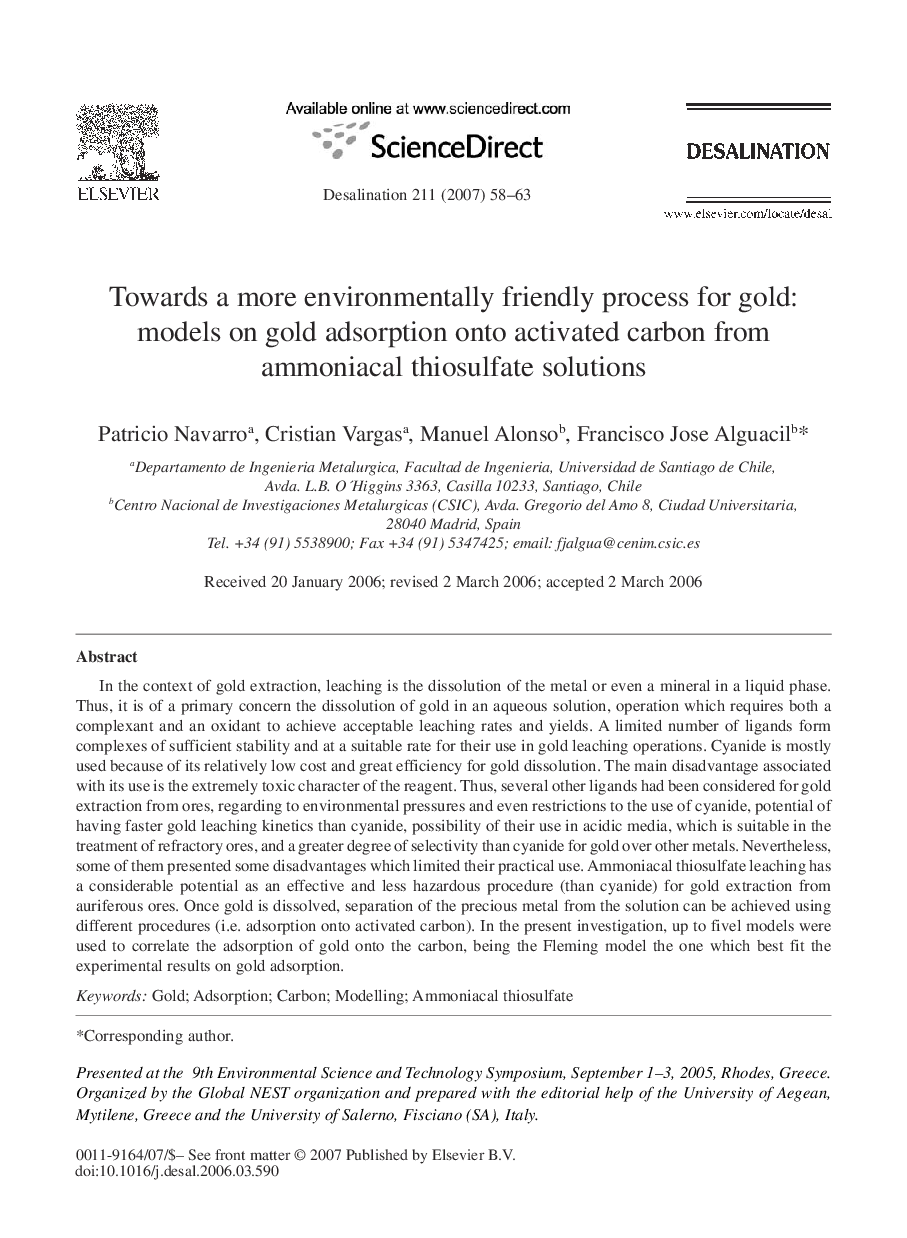| Article ID | Journal | Published Year | Pages | File Type |
|---|---|---|---|---|
| 627985 | Desalination | 2007 | 6 Pages |
In the context of gold extraction, leaching is the dissolution of the metal or even a mineral in a liquid phase. Thus, it is of a primary concern the dissolution of gold in an aqueous solution, operation which requires both a complexant and an oxidant to achieve acceptable leaching rates and yields. A limited number of ligands form complexes of sufficient stability and at a suitable rate for their use in gold leaching operations. Cyanide is mostly used because of its relatively low cost and great efficiency for gold dissolution. The main disadvantage associated with its use is the extremely toxic character of the reagent. Thus, several other ligands had been considered for gold extraction from ores, regarding to environmental pressures and even restrictions to the use of cyanide, potential of having faster gold leaching kinetics than cyanide, possibility of their use in acidic media, which is suitable in the treatment of refractory ores, and a greater degree of selectivity than cyanide for gold over other metals. Nevertheless, some of them presented some disadvantages which limited their practical use. Ammoniacal thiosulfate leaching has a considerable potential as an effective and less hazardous procedure (than cyanide) for gold extraction from auriferous ores. Once gold is dissolved, separation of the precious metal from the solution can be achieved using different procedures (i.e. adsorption onto activated carbon). In the present investigation, up to fivel models were used to correlate the adsorption of gold onto the carbon, being the Fleming model the one which best fit the experimental results on gold adsorption.
